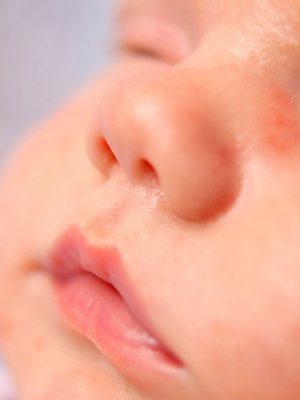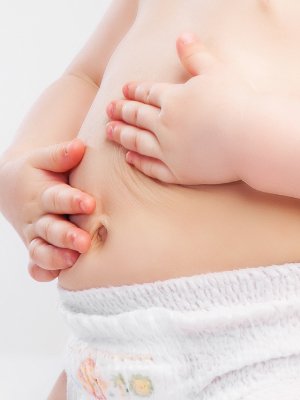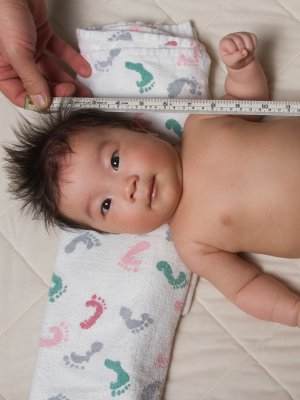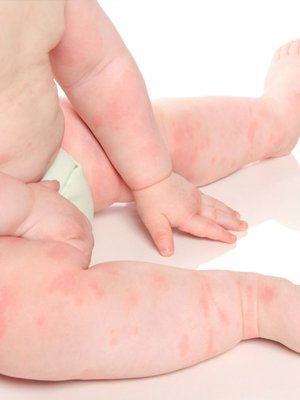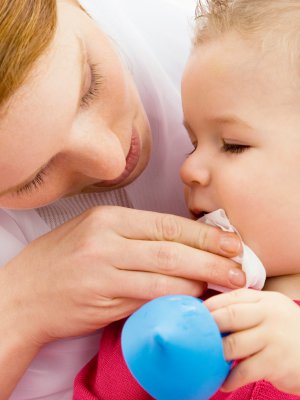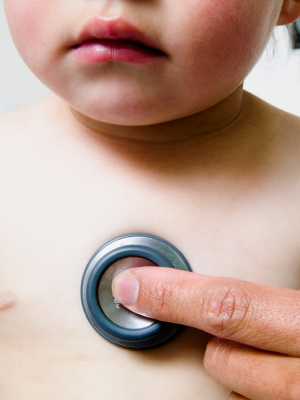CRYING AND COLIC

We believe breast milk is the best food for infants. When in consultation with their healthcare professional, mothers and families find that optimal breastfeeding is not possible due to their infant’s medical condition, formulas for special medical purposes play a vital role in providing essential nutrients to infants. We have a global commitment to market breast-milk substitutes responsibly.
Crying is a normal part of the developmental process during the first three months of a newborn’s life, as it is their primary means of communication within this time period.1,2 It is the typical way for an infant to express hunger, anger, pain or boredom, although some infants may cry for no reason.2
Within the first three months, it is common for a newborn to cry for up to two hours per day, although this gradually decreases after six weeks.1
In contrast, the term colic is used to describe infants with excessive crying or irritability. Colic generally follows a pattern of threes: crying for more than three hours per day, for more than three days per week and for more than three weeks, in an otherwise well-fed and healthy infant.1,3 Colic usually starts a few weeks after birth and by three months, the majority of infants with colic will have resolved their condition.4

Colic episodes usually occur in the late afternoon, or evening, and infants often exhibit behaviours including a flushed face, curled up legs, clenched fists and tensed abdominal muscles to accompany high-pitched screaming attacks.1
What causes colic in infants?
It is unclear why some infants display colic episodes. In a small minority of cases, there is an underlying organic disorder associated with colic.1 Such disorders may be gastrointestinal in nature, or related to trauma, the central nervous system, or due to an infection.1
Colic as a symptom of Cow’s Milk Protein Allergy
Colic in infants has also been shown to be linked to the ingestion of cow’s milk protein.5 Colic is known to be a symptom of Cow’s Milk Protein Allergy (CMPA) in both formula-fed6,7,8,9 and breastfed infants.10,11
The majority of infants affected with CMPA have at least two symptoms affecting at least two different organ systems.12,13 If, in addition to colic, your patient shows any of the signs and symptoms that can be related to CMPA14 (see below), you can use the CoMiSS® tool15 to score the combination of their symptoms and assess the likelihood of CMPA.
Signs and symptoms related to CMPA14
· Gastrointestinal/Digestive: Vomiting, reflux, regurgitation, anorexia, diarrhea, constipation
· Respiratory: Chronic cough, sneezing, wheezing, runny nose
· Skin: Rash, atopic dermatitis, urticaria, angioedema
· General: Failure to thrive, anaphylaxis, insomnia, inconsolable crying
How to score this symptom with the CoMiSS® tool
· Crying should only be considered in infants aged >2 weeks, <4 months, who have been crying for ≥1 week, without any obvious cause
· Crying can be related to colic when it occurs for more than 3 hours per day, for a period of at least 3 days per week, and for at least 1 week
· In addition to the crying score, if any of the following signs or symptoms related to CMPA are also present, they should also be given a score using the CoMiSS® tool. These include diarrhea, constipation, regurgitation, skin (atopic dermatitis and urticaria) and respiratory symptoms.
CoMiSS® awareness tool
The Cow’s Milk-related Symptom Score (CoMiSS)® is a simple, fast and easy-to-use awareness tool designed to help you more easily recognise the signs and symptoms that can be cow’s milk-related in infants and young children.

If you suspect your patient is suffering from symptoms that may be suggestive of CMPA, use the CoMiSS® tool to score and assess the likelihood of CMPA.
OTHER SYMPTOMS OF COW'S MILK PROTEIN ALLERGY
|
References |
|
1. Roberts DM., et al. Am Fam Physician. 2004;70:735–40 2. Centre of Excellence for early child development. Crying Behaviour information sheet, 2008 http://www.child-encyclopedia.com/crying-behaviour/resources (Accessed February 2016) 3. Wessel MA., et al. Pediatrics. 1954;14:421–35 4. Savino F., et al. Ital Journal Pediatr. 2014;40:53 5. Jakobsson I. and Lindberg T. Acta Paediatr Scand. 1979;68:853–59 6. Savilathi E., et al. Textbook of Gastroenterology and Nutrition in Infancy. 1981;689 7. Iacono G., et al. J Pediatr Gastroenterol Nutr. 1991;12:332–5 8. Lothe L., et al. Pediatrics. 1982;70:7–10 9. Lothe L. and Lindberg T. Pediatrics. 1989;83(2):262–6 10. Jakobsson I. and Lindberg T. Pediatrics. 1983;71:268–71 11. Jakobsson I. and Lindberg T. Lancet. 1978;2:437–39 12. Lifschitz C. and Szajewska H. Eur J Pediatr. 2015;174:141–50 13. Høst A. Pediatr Allergy Immunol. 1994;5:1–36 14. Koletzko S., et al. J Pediatr Gastroenterol Nutr. 2012;55(2):221–9 15. Vandenplas Y., et al. Acta Paed. 2015;104:334–9 |

